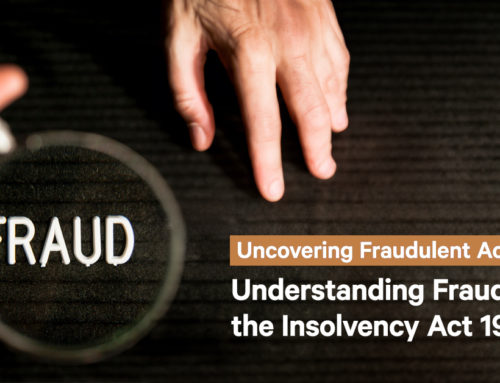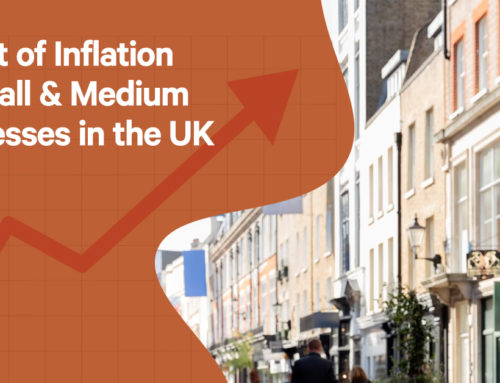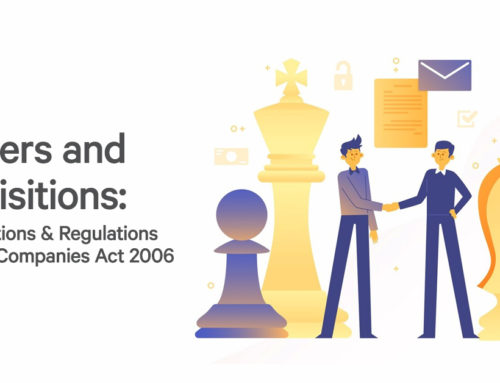Recently the Bank of England (BoE) reported that total corporate debt had risen by around 6% over the past two years in the UK. Their figures also revealed that small and medium-sized (SME) businesses carried more of the burden – by as much as a third – than larger listed businesses, principally because they were more likely to be in sectors that were heavily affected by the Covid-19 pandemic, such as hospitality and leisure.
The BoE particularly expressed concern for SMEs as their report showed the increase in debt was significantly higher, with many experiencing debt now in comparison to pre-pandemic. With 33% of SMEs carrying debt that is over ten times their cash balance and 18% having monthly debt repayments that are at least 15% or more of their income, it raises the question of how much long-term debt should a company have in the UK.
What is long-term debt in the UK?
Debt in its simplest form is how much money is owed to a creditor, such as a ban or a supplier. Long-term debt is usually associated with loans and other financed purchases that are paid back over a long term, i.e. three to five years, sometimes more.
It’s not unusual for a company to carry a certain amount of debt; indeed, most companies will use a loan to purchase equipment and even stock in the early days, as part of their growth plan. However, the problem comes when the level of debt becomes too much for the company to pay back.
Over the past ten years, interest rates have been exceptionally low which has encouraged businesses to take on more debt with the confidence that they can pay it back over the designated period.
It is also not unusual for lending firms to approve loans based on the level of net debt a company has, particularly if that debt is decreasing over a period of time. The problem comes when an incident happens, such as Brexit or the Covid-19 pandemic, when the financial markets change, interest rates increase and income decreases.
There is a difference in the debt situation of a company in that some debt is considered a ‘healthy’ level. Known as ‘gearing’, it is particularly evident in manufacturing and technology companies which are capital-intensive; there is a significant outlay of funds before they see an income.
From an investor’s or lender’s point of view, this is when the company’s debt ratio is determined to understand whether the company is stable long-term and if it is able to raise further capital for its growth plans.
What is a company’s long-term debt ratio?
The long-term debt ratio is the difference between a company’s long-term debt and its total assets that aren’t subject to the debt, i.e. any asset that has been bought by the debt is cancelled out. It is calculated by dividing the long-term debt by the company’s total (debt-free) assets.
Whilst the long-term debt ratio can vary depending on the industry sector and the type of company, most SMEs want to keep their long-term debt ratio between 0.5 to 1; above this figure would indicate that the company’s debt is greater than the value of its assets, i.e. they owe more than they are worth. The closer it is to zero, the better stability the company has and, therefore, the better its financial position.
How much long-term debt in the UK should a company carry?
At a debt ratio of 0.5, the company would need to liquidate half its assets to pay off its entire debt. Owing more than the company’s worth is not a good position to be in, and if insolvency becomes an issue, it may impact a liquidation process.
This ratio is also known as debt-to-equity ratio whereby it calculates the level of debt compared to the equity (capital) the company has available. So, for a limited company, divide the total liabilities by the total shareholder equity (the business’s net worth). This is the figure the shareholders would receive if the company’s assets had to be liquidated and all the debts paid off.
The higher the ratio, for example, 2 to 2.5, the more the company relies on exterior funding, such as loans, resulting in a less stable business and the potential to experience trading problems at a later date.
Some industries will have a higher ratio of more than two due to the nature of their business, such as manufacturing or finance because their business is more capital intensive. A much lower long-term debt ratio means the company is not reliant on outside lending sources.
Whilst this may be attractive to a lender, it may not be good for investors. A low debt ratio may indicate that the business is not making the most of its potential profit and growth capability if it borrowed finance and invested in the resources to scale up its operations.
As businesses continue to recover from the pandemic and pay back loans they took out to keep them afloat, EY reported that net UK business lending dropped in 2021 by 0.3%. As expected, bigger companies are paying back debts more quickly than SMEs, but net growth is set to increase in 2022, resulting in more debts being paid back and less spent on borrowing.
Although the impact of rising interest rates and the cost of living crisis is yet to have a true impact on businesses, EY is predicting that business lending will increase by 2.4% in 2022 as economic markets return to normality, with a greater focus on growth than has been seen over the past two years.
If you are struggling with corporate or personal debt and unsure what the right route is to deal with your creditors, the first step is to seek professional advice. Our highly experienced professionals at Leading are on hand to help with advice on managing personal and professional insolvency matters. Contact us today and discover how we can help you.






